Abstract
A method for direct, continuous determination of ferric ions produced in autotrophic iron oxidation, which depends upon the measurement of ferric ion absorbance at 304 nm, is described. The use of initial rates is shown to compensate for such changes in extinction during oxidation, which are due to dependence of the extinction coefficient on the ratio of complexing anions to ferric ions. A graphical method and a computer method are given for determination of absolute ferric ion concentration, at any time interval, in reaction mixtures containing Thiobacillus ferrooxidans and ferrous ions at known levels of SO42+ and hydrogen ion concentrations. Some examples are discussed of the applicability of these methods to study of the rates of ferrous ion oxidation related to sulfate concentration.
Full text
PDF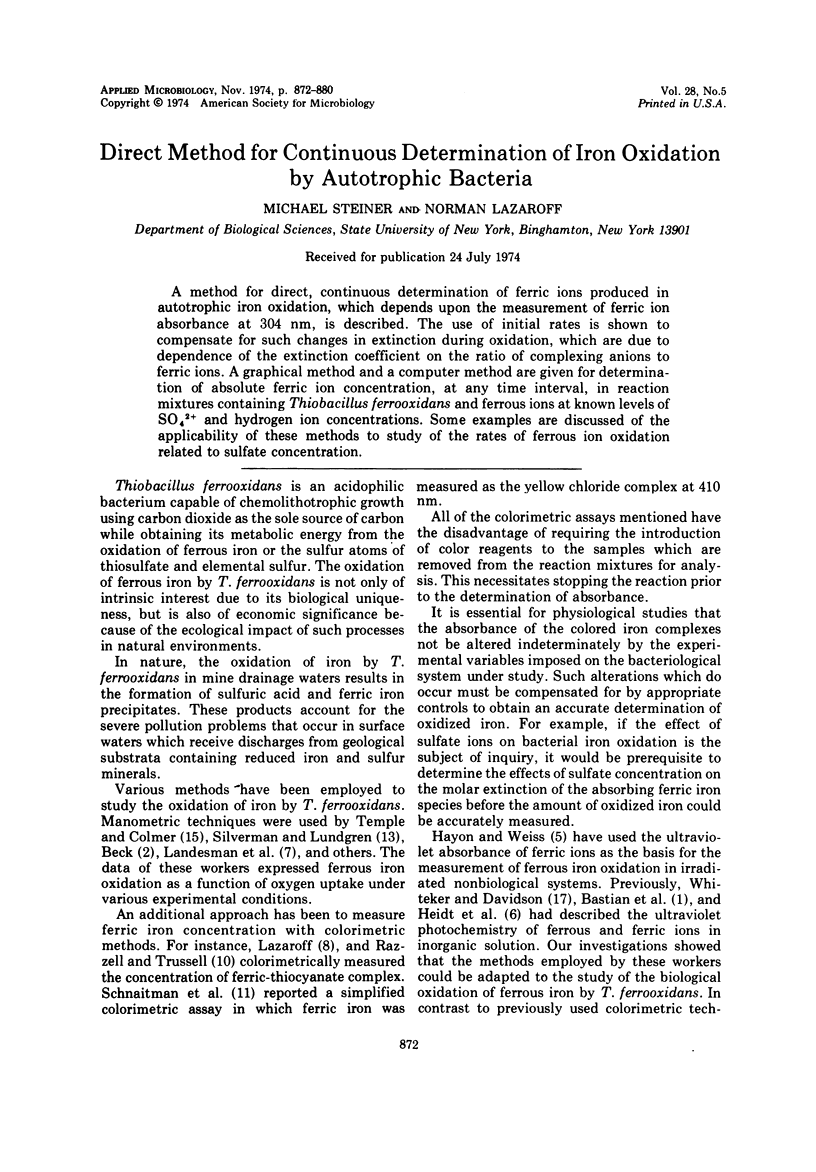
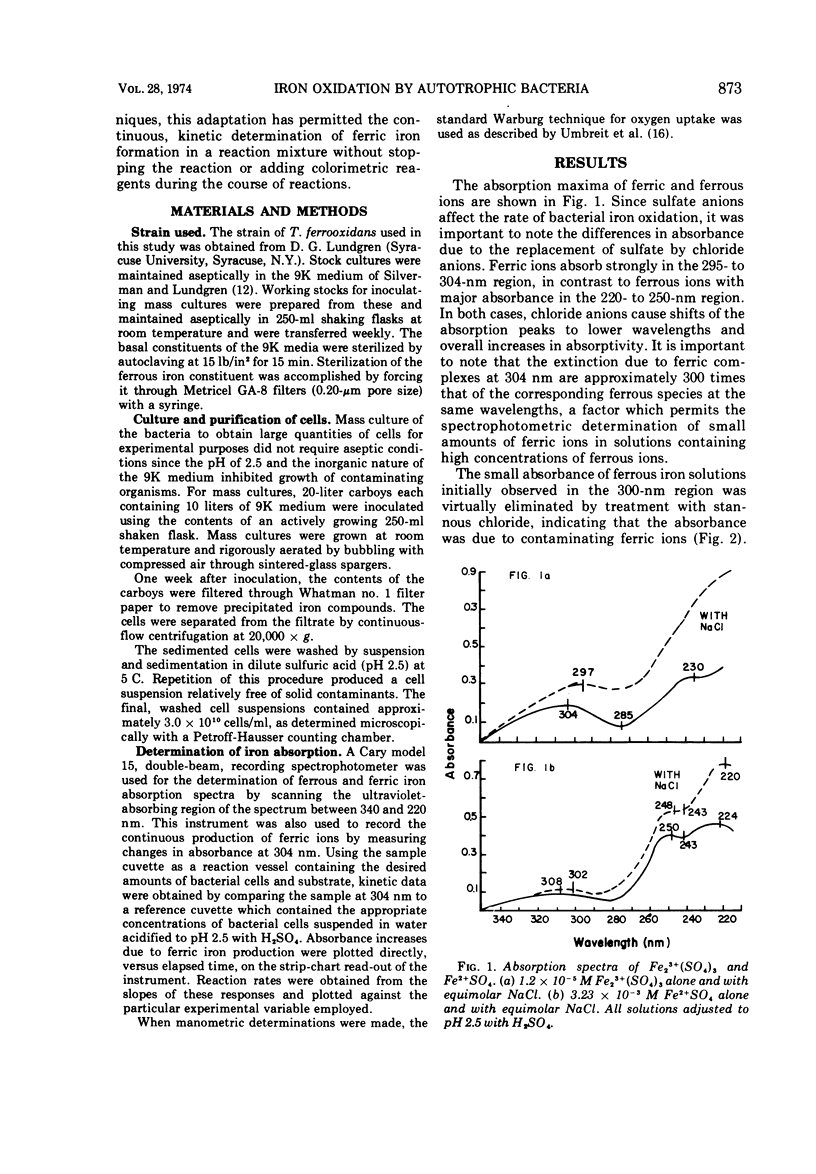

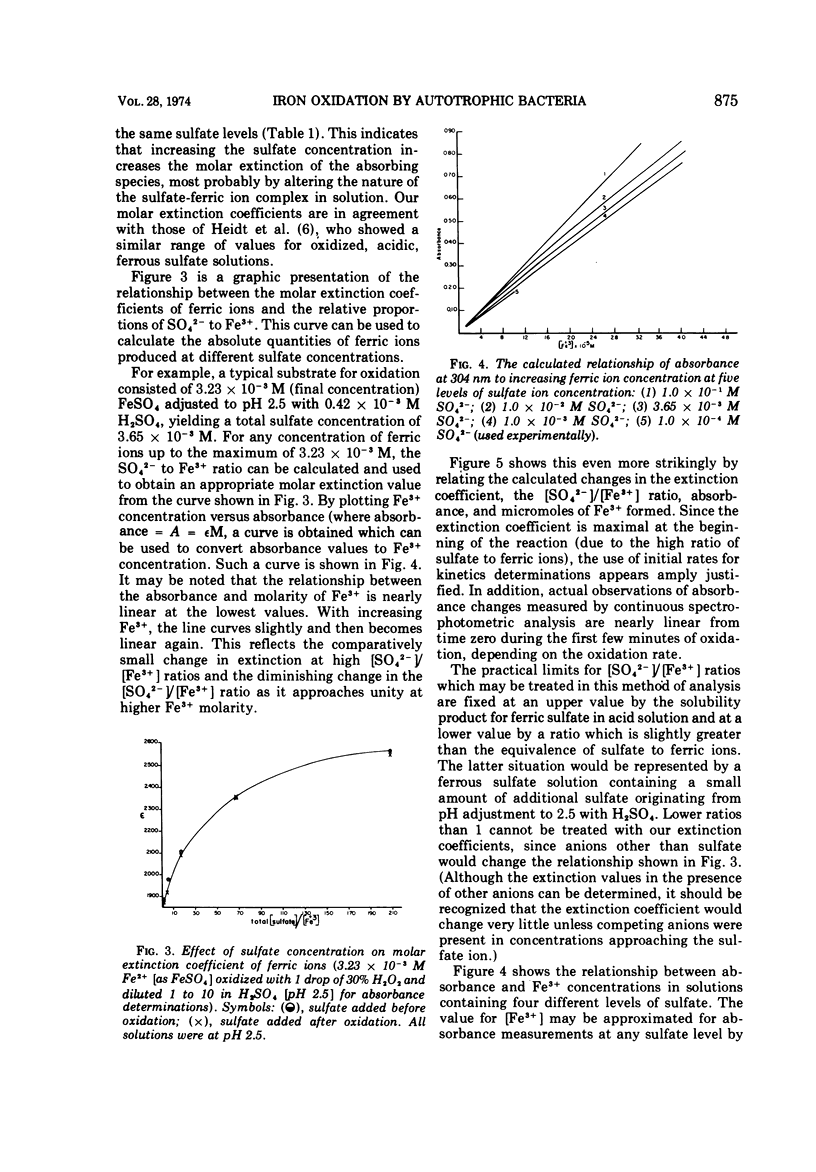

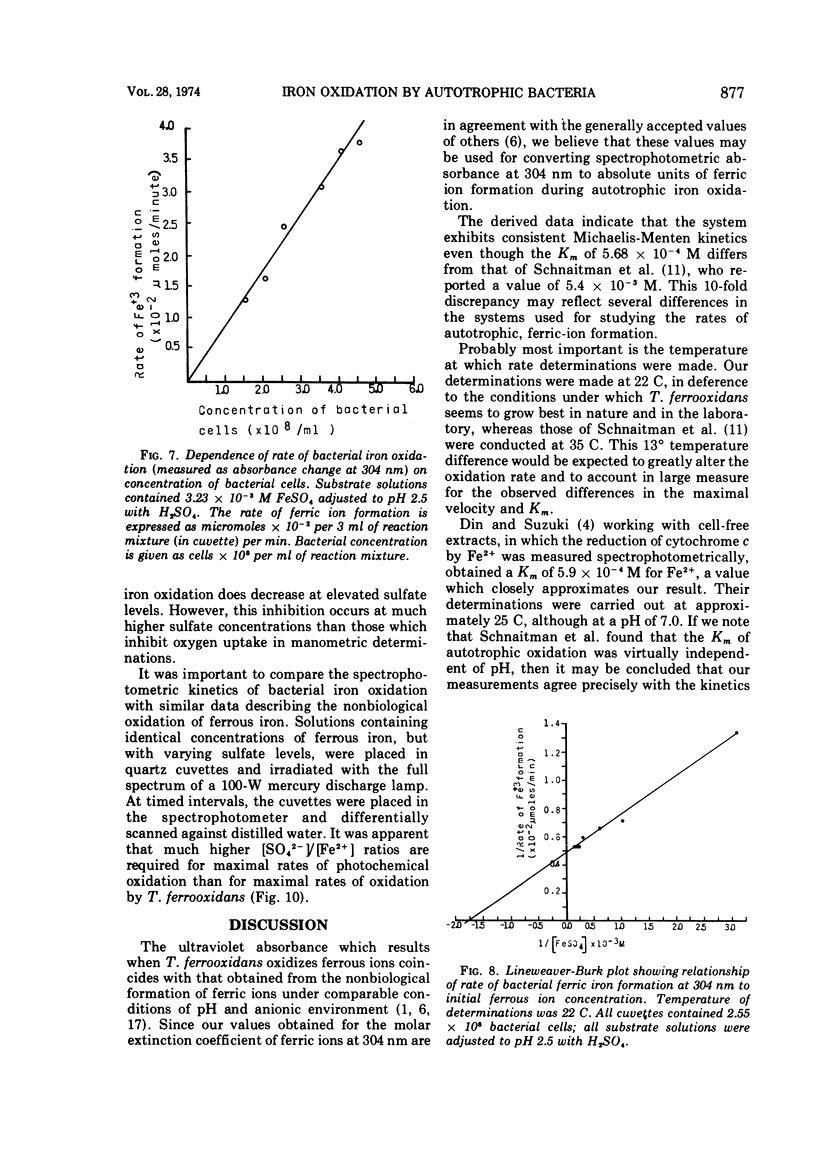
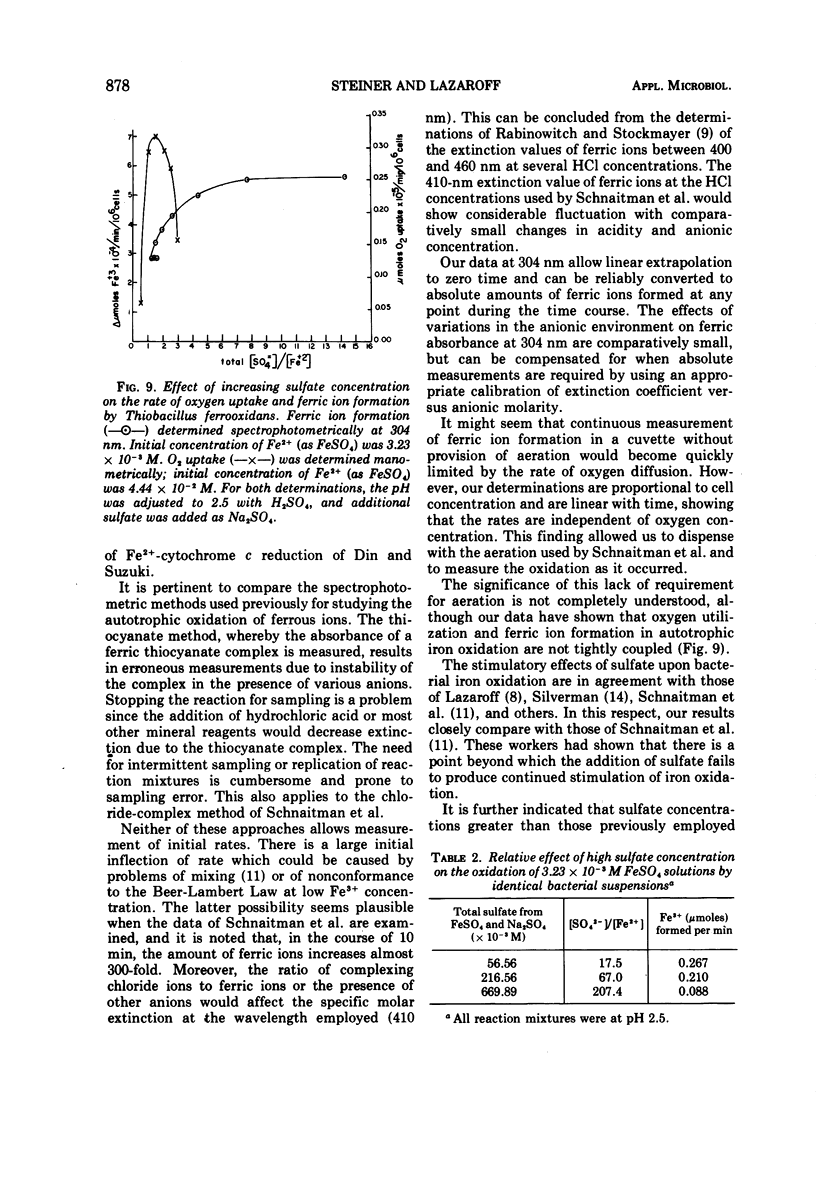
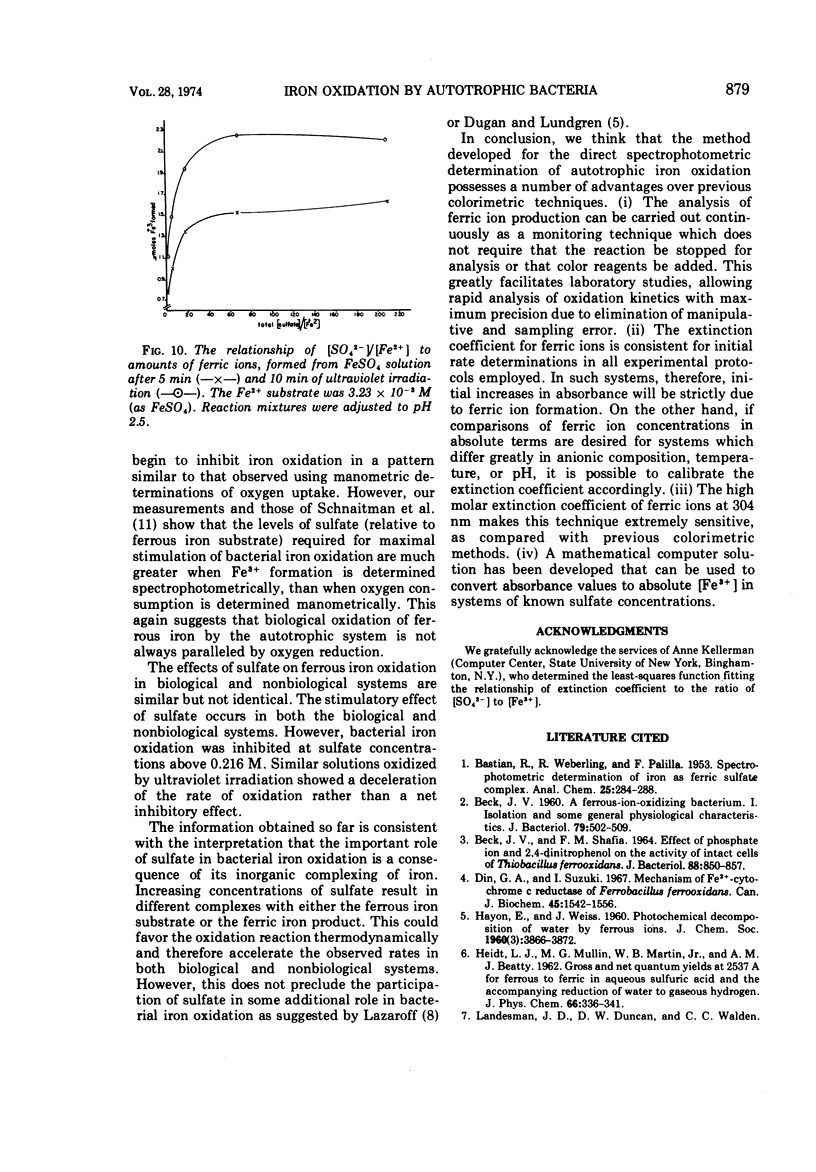
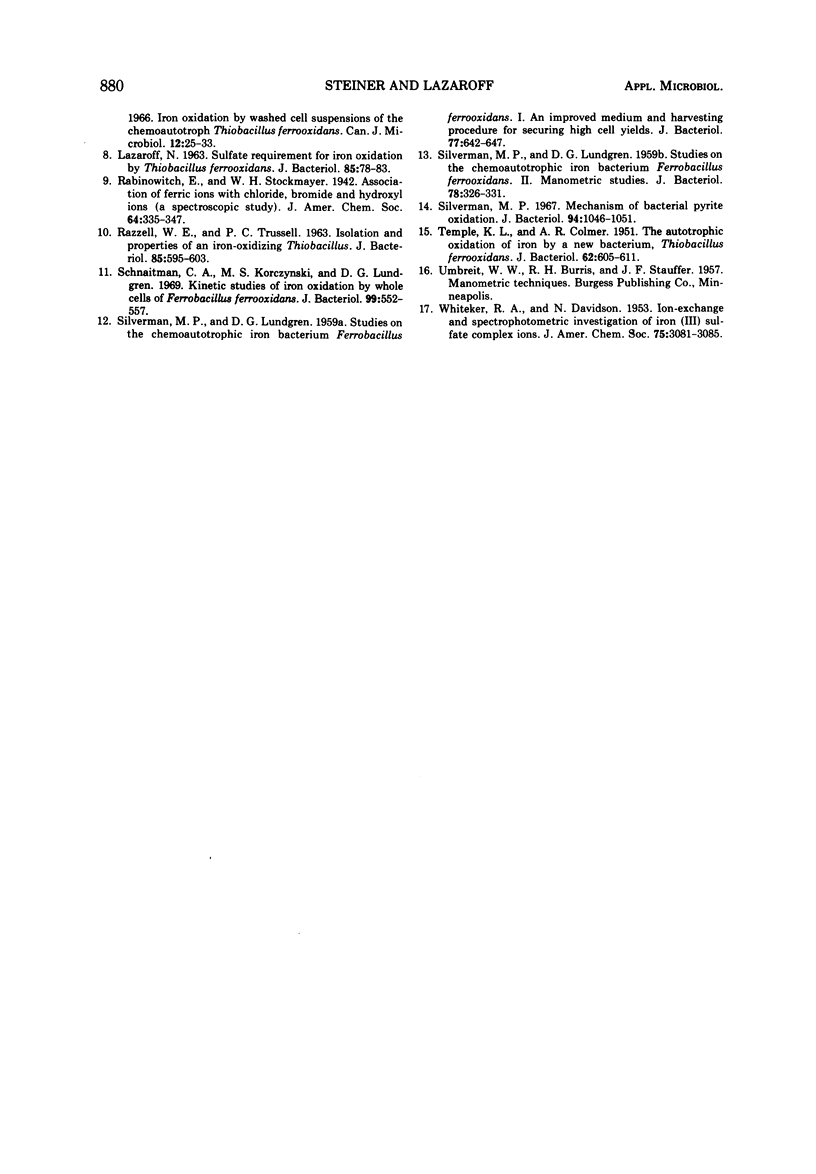
Selected References
These references are in PubMed. This may not be the complete list of references from this article.
- BECK J. V. A ferrous-ion-oxidizing bacterium. I. Isolation and some general physiological characteristics. J Bacteriol. 1960 Apr;79:502–509. doi: 10.1128/jb.79.4.502-509.1960. [DOI] [PMC free article] [PubMed] [Google Scholar]
- BECK J. V., SHAFIA F. M. EFFECT OF PHOSPHATE ION AND 2,4-DINITROPEHENOL ON THE ACTIVITY OF INTACT CELLS OF THIOBACILLUS FERROOXIDANS. J Bacteriol. 1964 Oct;88:850–857. doi: 10.1128/jb.88.4.850-857.1964. [DOI] [PMC free article] [PubMed] [Google Scholar]
- Din G. A., Suzuki I. Mechanism of Fe++-cytochrome c reductase of Ferrobacillus ferrooxidans. Can J Biochem. 1967 Oct;45(10):1547–1556. doi: 10.1139/o67-184. [DOI] [PubMed] [Google Scholar]
- Lazaroff N. SULFATE REQUIREMENT FOR IRON OXIDATION BY THIOBACILLUS FERROOXIDANS. J Bacteriol. 1963 Jan;85(1):78–83. doi: 10.1128/jb.85.1.78-83.1963. [DOI] [PMC free article] [PubMed] [Google Scholar]
- RAZZELL W. E., TRUSELL P. C. ISOLATION AND PROPERTIES OF AN IRON-OXIDIZING THIOBACILLUS. J Bacteriol. 1963 Mar;85:595–603. doi: 10.1128/jb.85.3.595-603.1963. [DOI] [PMC free article] [PubMed] [Google Scholar]
- SILVERMAN M. P., LUNDGREN D. G. Studies on the chemoautotrophic iron bacterium Ferrobacillus ferrooxidans. I. An improved medium and a harvesting procedure for securing high cell yields. J Bacteriol. 1959 May;77(5):642–647. doi: 10.1128/jb.77.5.642-647.1959. [DOI] [PMC free article] [PubMed] [Google Scholar]
- SILVERMAN M. P., LUNDGREN D. G. Studies on the chemoautotrophic iron bacterium Ferrobacillus ferrooxidans. II. Manometric studies. J Bacteriol. 1959 Sep;78:326–331. doi: 10.1128/jb.78.3.326-331.1959. [DOI] [PMC free article] [PubMed] [Google Scholar]
- Schnaitman C. A., Korczynski M. S., Lundgren D. G. Kinetic studies of iron oxidation by whole cells of Ferrobacillus ferrooxidans. J Bacteriol. 1969 Aug;99(2):552–557. doi: 10.1128/jb.99.2.552-557.1969. [DOI] [PMC free article] [PubMed] [Google Scholar]
- Silverman M. P. Mechanism of bacterial pyrite oxidation. J Bacteriol. 1967 Oct;94(4):1046–1051. doi: 10.1128/jb.94.4.1046-1051.1967. [DOI] [PMC free article] [PubMed] [Google Scholar]
- TEMPLE K. L., COLMER A. R. The autotrophic oxidation of iron by a new bacterium, thiobacillus ferrooxidans. J Bacteriol. 1951 Nov;62(5):605–611. doi: 10.1128/jb.62.5.605-611.1951. [DOI] [PMC free article] [PubMed] [Google Scholar]


